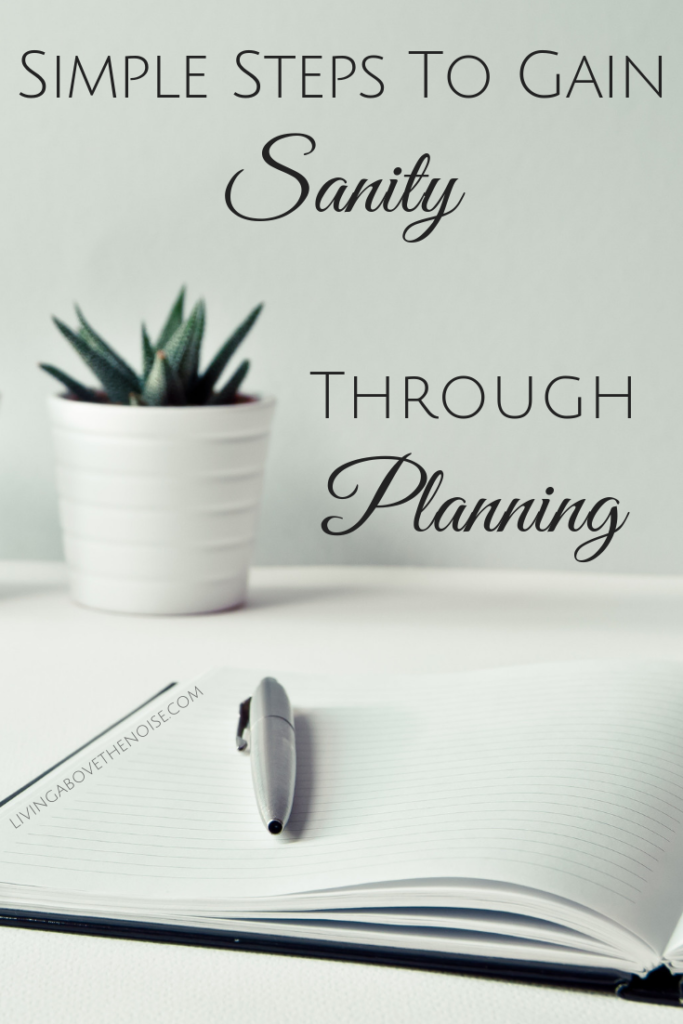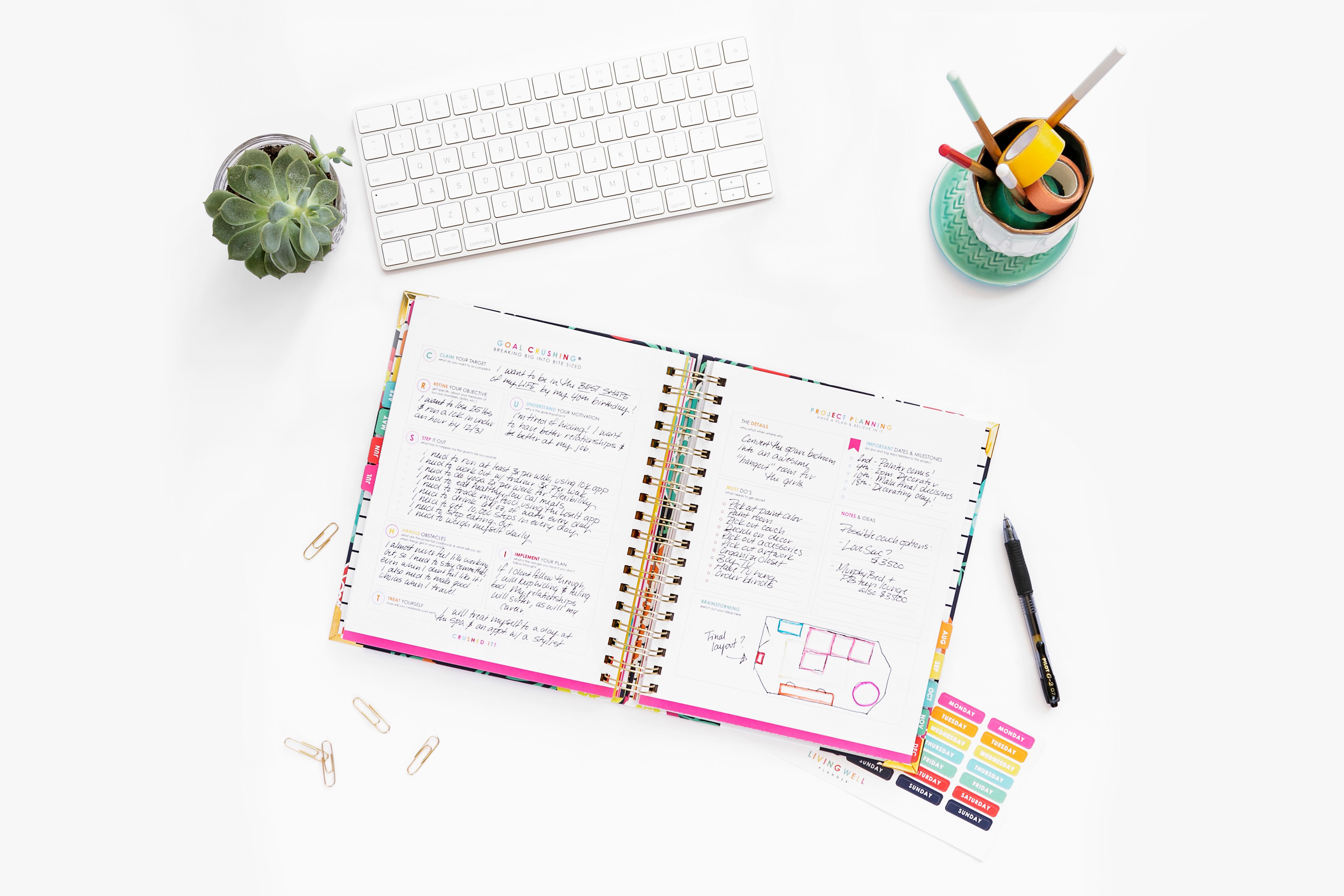 First Things First—Be Willing To Do the Work!
First Things First—Be Willing To Do the Work!
This post has the potential to bring order to your busy life. You really can gain sanity through planning. But you have to be prepared to do the work!
Yikes, maybe that’s not the best start to a post with the word “Simple” in its title! But, it’s true and I’m not going to fool you. You and I need to be willing to get past the lazy troll who lives within us and do the tough stuff. I’m sorry, but it’s just reality! If you’re new to this topic, you can find my post on why you need a plan in the first place, here. Now let’s get started!
We all know the chaos that reigns as we get busier and busier in life. There is just so much to do and not enough time to do it! But by following these steps, you will see clarity in getting things done — along with what’s really important to you and what’s just fluff on your to-do list. We get so generic in what we put on our to-do lists that we miss what’s really necessary. Read through this post, then read it again from your own life perspective in order to really see the picture from a 40,000-foot view of your life.
Remember, the steps are simple, it’s the work that’s hard—but oh, the reward is sweet!
The “How To’s” Of Developing Planning Habits
So here are the simple steps I promised you. Remember—as we repeat these steps, they’ll get easier, plus we’ll be forming habits to increase our productivity. And guess what? You can start this process before you get your planner!
- Categorize
- Brainstorm
- Add Sub-Tasks
- Ask Questions and Add Details
- Set Due Dates
A lot of people recommend starting with a brainstorm session. Personally, I find categorizing my areas of responsibility first helps me hone in on the most important areas of my life, rather than lumping them all into one pile.
#1 — Categorize
This is pretty simple. Categorize your main areas of responsibility:
Home — Family — Work — Self — Finances — Relationships — etc.
#2 Brainstorm
(This section and the next Subtask section go hand-in-hand but the importance of doing both is often missed in most planning tutorials.) KEY – this isn’t the place to start writing down your specific to-do’s! Hang in there.
Under each category heading, brainstorm all areas that need your attention — the ones that drive you crazy and/or are simply your responsibility. Keep them basic (see example below). List out any projects, rooms to keep up, events, etc. **If you over-think and write down all your tasks and to-do’s, it makes it much more difficult when it comes time to decide which task is more important then another. (Believe me, I’ve done this wrong for years and wondered why my big stuff never got done!)
A lightbulb went off for me when I listened to a webinar by Sue Hollowell, a project manager turned life-coach. Under each category of responsibility, she recommends using Nouns to describe the things that need your attention. Think of these as the place or the thing needing attention, not the actual activity or task. This keeps you focused on the main goal, not getting sidetracked on the details before you have a plan!
Examples: (remember—use nouns!)
Home: Bathroom Remodel — Chores — Garden — Clutter — Garage — etc.
Family: Homeschool — Birthdays — Vacations — Clothing — etc.
You can add a “Miscellaneous” heading under each category. It’s good to have a place to keep track of your less important tasks without taking up prime space under your main categories.
#3 Add Subtasks
Now you’ll add specific tasks under each project and responsibility. So, start with the project, then add the subtasks to get the job done. Jeff Goins, author, explains it this way —
Why? Because that “one task” seems monumental to accomplish! It’s not clear enough to let you know what it will take to get the job done. You’ll keep passing over it due to lack of clarity on what should come first. So you’ll avoid it! Instead, avoid the overwhelm. Detail out each responsibility and the job becomes clear!
Here’s another way to picture it. What if you wrote down, “Sort through closets.” You’ll think of this job as pretty time intensive. It will seem overwhelming due to its sheer size. If you’re like me, you’ll put it off because it’s so foggy in details.
Before you can really plan for a project, each task needs to be broken down into the sub-tasks required to accomplish it. These are the things you place on your to-do list, NOT the bigger picture projects. Those stay on the brainstorm list.
Specify each area of responsibility and all the details needed for you to gain the “order” you desire. Examples:
- Garage: buy doormats, sort boxes, sweep, wipe off shelves…
- Clutter: put sweaters in totes, go through closets and give away anything that doesn’t fit, organize shoes, dust shelves…
- Chores: dust 1/month, vacuum 2x/week, wash windows 2/year…
- Garden: water weekly, buy fertilizer, fertilize every other week, weed 1/month, have Bruce get mulch and add 3″ to beds, plant roses…
Do you see how this highlights the time and tools and people needed for a job? This makes planning so much easier!
#4 Ask Questions And Add Details
Now is the time to ask lots of questions. The answers will add the necessary details to your list. Instead of having a foggy idea, you’ll know exactly what it will take to reach your goal. You may even discover that purchasing a simple tool or not knowing a step is all that’s holding you back!
- Where do I start? How much time do I plan for? (Clean garage 3 hrs. on Saturday – all family needed)
- In what order does each task need to be done? List out each step. (Sweep. Pressure wash. Throw out old tools/toys. Straighten totes on shelves.)
- When will you need a tool or a person to help? (Buy new cleaning rags, doormats. Bruce get pressure washer set up.)
#5 Set Due Dates
Set the desired end date for each goal, project, or activity. Consider when you want or need to accomplish a goal and choose a due date. Work around events already on your calendar. Then work backward from that date on your calendar, portioning out your time and tasks right back to today!
#6 Next & Last Step — Add Tasks To Your Planner Calendar!
Just do it! Start adding tasks to those little boxes on your planner. This seems like such a basic step yet it can feel so difficult to commit to. We don’t want to put it on the “wrong” day. We worry something else will come up or we won’t have enough time to do it. This century demands busy schedules. We get mired in the chaos and forget to make a plan. But we really need a strategy! Again, just do it!
Begin adding tasks to your weekly schedule. Choose to treat these tasks like actual appointments you make with yourself. Act like you would at work — like you’re getting paid for your time and your projects. Be the CEO of your life! Once you do, you’ll see this process take a complicated list of tasks and responsibilities and bring order and sanity into your life!
Whew! We covered a lot! Read these steps again, picturing your life and responsibilities. It will begin to make sense. Then follow the steps in a few areas you want to work on. But, most importantly —
Don’t Quit!* — You can do this!
*And I really mean don’t quit! I had to remind myself of this the other day. I had a plan — a really good one. But my day was filled with unexpected events. Think: dog gets hurt and may need a vet visit; son needs to make a last-minute birthday gift order; mother-in-law needs emergency doctor appointment. You get the picture!
This is life. Full of unexpected events. It evolves and changes even though we have a plan.
Please don’t let that stop you from gaining order. Adjust as necessary.
And don’t let it stop you from reaching for your goals. One day at a time!

The plans of the diligent lead surely to advantage, But everyone who is hasty comes surely to poverty. Proverbs 21:5
No pressure to purchase anything, but if you make a purchase through one of these links, you will help to support the work I do here at Living Above The Noise. Thanks!













